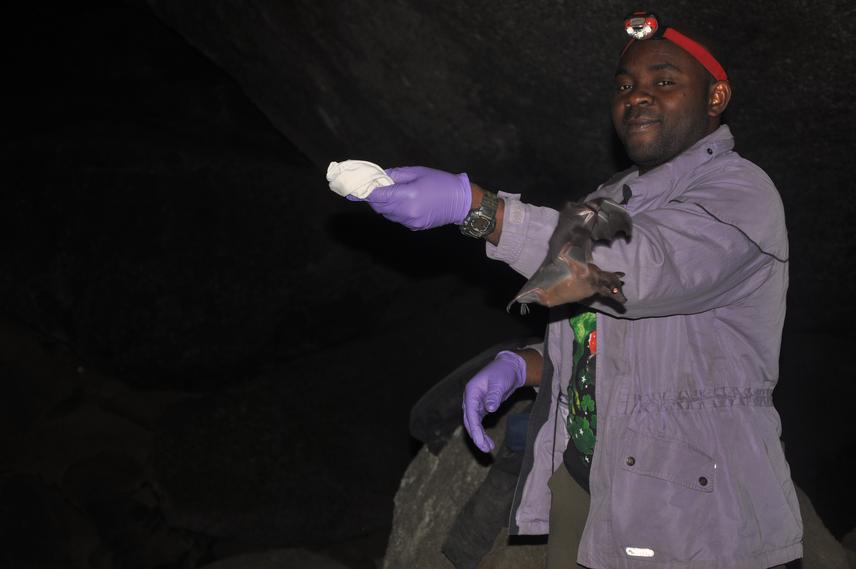Benneth Chigozie Obitte
This project aims to assess the sustainability of the Egyptian fruit bat (Rousettus aegyptiacus) populations under current hunting levels in Southern Nigeria, Identify the drivers of bat hunting/ bat meat consumption behaviour and assess the predictors of roost choice among R. aegyptiacus in southern Nigeria. In addition, plants pollinated/dispersed by fruit bats will be identified in the study area, and results in this study employed in a locality specific conservation outreach program to reduce bat hunting.

Benneth Obitte releasing a fruit bat after data collection.
About 20% of sub-Saharan bat species are hunted for food and medicine, with large-bodied fruit bats (Chiroptera: Pteropodidae) the most targeted (Mickleburgh et al., 2009; Mildenstein et al., 2016). In southern Nigeria, the Egyptian fruit bat (Rousettus aegyptiacus), a cave dependent species is the most abundant non-migratory fruit bat species wherever they occur, and hence a critical species for pollination and seed dispersal of ecologically and economically important plants (Korine et al., 1998; Vaglio et al., 2011). Unfortunately, in areas with high cave densities in southern Nigeria R. aegyptiacus is the main target of widespread intense hunting. A recent hunting survey in Southern Nigeria's Cross River State reported that 42% (n=327) of interviewed hunters hunt bats (Friant et al. 2015), and a high proportion of the hunting efforts occur in protected areas (J. Ayah. pers. comm.). Likewise, in a preliminary survey I conducted in Boki and Obanliku Local Government Areas (southern Nigeria) in 2016, 72% of (n=150) respondents reported hunting bats at least once in the previous year, and most of these efforts occurred in caves – with offtake levels reaching over 1500 individuals per day from a single cave. This high offtake could cause breakdown of bat-plant ecological networks raising serious conservation concerns, and the need for a population assessment in hunting localities to a critical level. Using a socio-ecological approach, I will evaluate the drivers of bat hunting and meat consumption behaviours in southern Nigerian communities where intense hunting is reported, assess sustainability of harvest levels based on a population model, and identify plant species pollinated and dispersed by R. aegyptiacus.
Conservation intervention and outreach programs are most effective if such programs are designed to target drivers of behaviours (Kingston, 2016), and if supporting data are locality specific (Scanlon et al., 2014). For example, a list of local ecologically and economically important plants serviced by bats conveys their importance more effectively than a general statement that bats are important pollinators and dispersers. Therefore, the results of the study will be employed in community-specific outreaches and inform roost protection by park management.